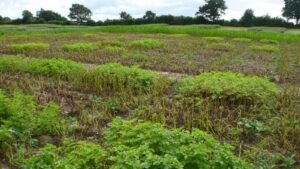As chairman of the Seed Innovation Protection Alliance (SIPA), I am always struck by the ironic position many people take regarding innovation and intellectual property in all sectors of our economy. On the one hand, everyone wants or needs innovation … on the other, nobody likes paying for it! Most people don’t realize they are mutually tied at the hip!
According to the U.S. Department of Agriculture (USDA), today’s U.S. row crop and vegetable seed market is worth approximately $18.2 billion dollars, or approximately 10-11 percent of an average farmer’s budget. Anyone familiar with the seed business can tell you that a seed purchase is an emotional decision for a farmer and one of the most important decisions he or she will make each year. Forget all the other distractions about farm input decisions; farmers are making a key decision about the right variety for each and every one of his or her fields. Soil fertility/structure, pest pressure, mother nature’s blessings/curses and eventual market demand determine a farmer’s decision on the right variety with the right characteristics from a chosen supplier(s). This is what a farmer values and what every seed supplier must learn.
To this end, seed companies must provide “innovation” in many forms and fashions. Some seed companies invest 10-12 percent of revenue in developing new varieties with disease tolerances, specific quality enhancements or nutritional benefits to consumers (e.g. downy mildew tolerance, improved flavor/color, higher glucosinolate levels in broccoli, specific grains for breads/pasta/pastry markets). Other companies develop traits that minimize stresses to the growing crop by providing efficient means of controlling pests (soil organisms, weeds, insects) or being more efficient (drought stress). Some even develop traits that provide enhanced oils, which are more nutritious to humans (low linoleic oils). And finally, seed companies provide “local” advice, sharing local experiences and guidance for maximum yield and nutritional content.
Many for-profit companies are willing to take the risk of these investments because they understand a win-win situation is the only sustainable path to earn a farmer’s business day-in and day-out. When varietal development takes approximately seven to 10 years at a cost of $1 million to $7 million or a typical trait takes approximately 13.1 years at a cost of $136 million to develop, test and get the regulatory approvals, one realizes this is a long-term partnership. Without the opportunity of a win-win scenario, many companies would not take this financial risk. This is quite evident in the U.S. cereal grain markets where the genetic gains during the past 20 to 30 years significantly lags that of row crops or even vegetable crops. Companies just won’t risk an investment they can’t recoup. Strong intellectual property protection helps provide the opportunity for companies and universities to pursue a fair return on their investment, and is an important part of the investment analysis.
It’s easy to forget how far agriculture has come thanks to the dedicated plant breeders, scientists, agronomists and all the other people involved in bringing tailor-made innovations to U.S. farmers. Just look back at what some crops originated from before plant breeding or how farming evolved from the early 1900s. Variety development, hybridization, Green Revolution, biotech traits, seed treatment technologies, precision planting … all new and improving innovations farmers have voted for with their checkbooks.
Innovation must be a win-win partnership between companies and farmers. Either they jointly innovate and grow together or they stand still, much like the proverbial chicken that never made it to the other side.
As Alan Kay, a computer scientist, said in 1971: “The best way to predict the future is to invent it!”












